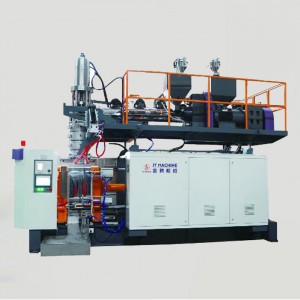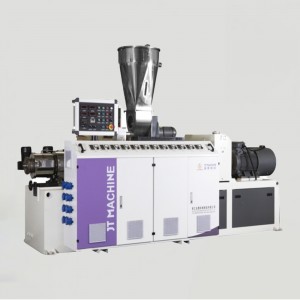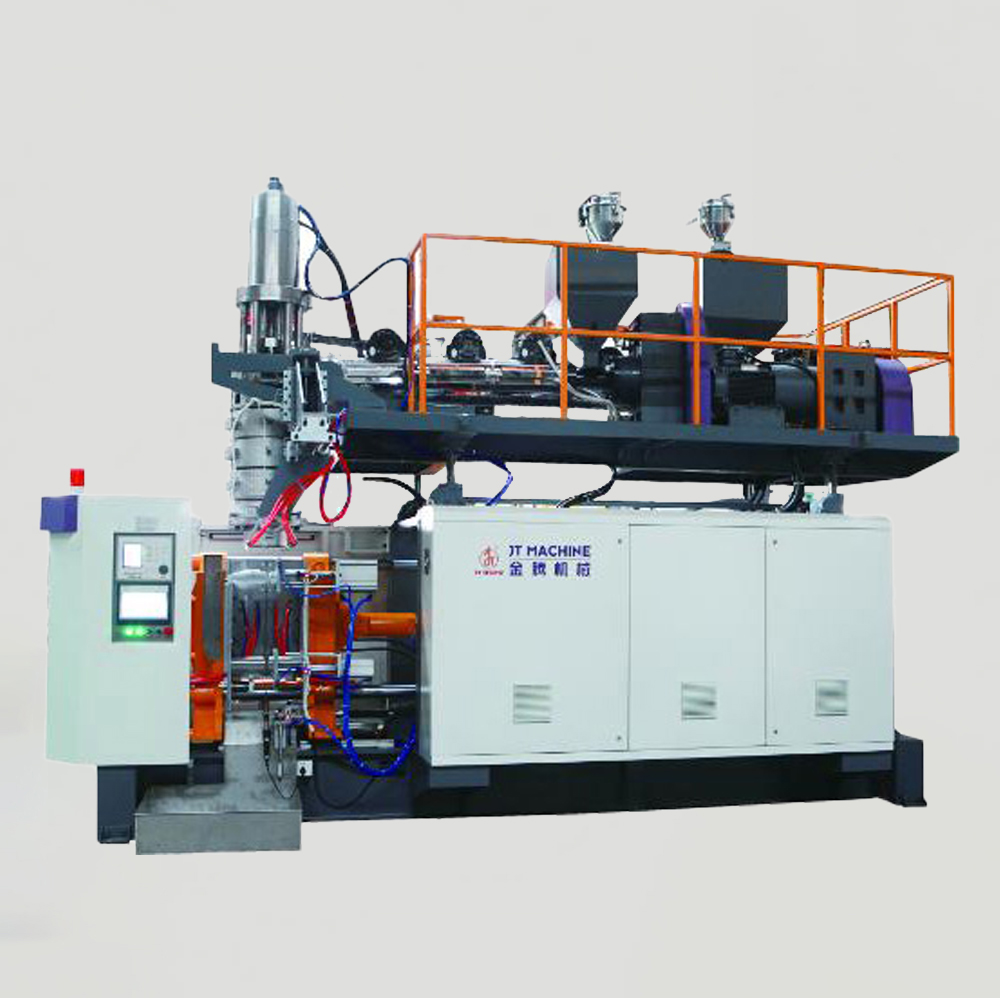
Advanced bottle blowing machines have revolutionized the manufacturing landscape. Industries now rely on these machines to meet rising demands for high-speed, precision-based production. Features such as automation and real-time monitoring ensure consistent quality while reducing costs. High-speed models can produce between 500 to 1,000 bottles per hour, addressing the beverage industry’s growing need for efficient solutions. Additionally, the shift toward lightweight packaging has led manufacturers, including PP bottle blowing machine factories, to embrace these technologies for their versatility. Furthermore, the integration of a PVC foam board extrusion line enhances production capabilities, while a single screw extruder for garbage bag manufacturing complements the diverse applications of these advanced machines.
How Bottle Blowing Machines Work

Preform Creation and Heating
The bottle blowing process begins with the creation and heating of preforms. These preforms, typically made from materials like PET, are heated to achieve the ideal pliability for molding. Advanced bottle blowing machines utilize infrared radiation or hot air circulation to evenly heat the preforms. This ensures uniformity in the material’s temperature, which is critical for maintaining consistent quality during the subsequent stages.
The heating system in modern machines is designed for precision. Operators can regulate the temperature to minimize flaws, with recommended settings often around 45°C (113°F). This level of control reduces material waste and ensures that the preforms are adequately prepared for stretching and blowing. After heating, the preforms transition seamlessly to the next stage, where they are shaped into bottles.
Molding and Shaping
Once heated, the preforms are placed into molds that define the final shape and size of the bottles. The molding process involves several key components working in harmony to ensure accuracy and efficiency.
- Heating Unit: Softens the preform for pliability.
- Mold Clamping System: Secures the molds and aligns the preform for precise shaping.
- Stretching and Blowing Mechanism: Stretches the softened preform while pressurized air blows it into the mold, forming the bottle.
The JT series bottle blowing machine excels in this stage due to its advanced control systems and robust design. Features like the platform lifting function accommodate various die heights, enabling the production of diverse bottle designs. Additionally, the machine’s proportional hydraulic system ensures smooth and rapid actions, enhancing productivity.
| Component | Function |
|---|---|
| Heating Unit | Softens the preform using infrared radiation for pliability during molding. |
| Mold Clamping System | Secures molds in place and aligns the preform for accurate bottle formation. |
| Stretching and Blowing | Stretches the softened preform and blows air into it to shape the bottle accurately. |
| Cool Down System | Rapidly cools the bottle to maintain shape and structural integrity after molding. |
| Ejection System | Removes the finished bottle from the mold using mechanical arms or air pressure without damage. |
This stage highlights the versatility of bottle blowing machines, which can accommodate various bottle sizes and shapes to meet diverse market demands.
Cooling and Ejection Process
The final stage involves cooling and ejecting the bottles. Rapid cooling solidifies the bottle’s structure, ensuring it retains its shape and meets quality standards. Advanced machines like the JT series use a combination of air and water cooling systems to expedite this process. Cooling times can range from 1.5 seconds to 20 seconds, depending on the bottle’s size and material.
After cooling, the bottles are ejected from the molds using mechanical arms or air pressure. This step is crucial for maintaining production speed and preventing damage to the finished products. The JT series incorporates an automatic lubrication system and a cylinder drive system for efficient ejection, reducing maintenance requirements and operational downtime.
| Process | Description |
|---|---|
| Cooling | Rapid cooling solidifies the bottle structure, ensuring shape retention and faster production cycles. |
| Ejection | Bottles are ejected post-cooling and undergo quality control to meet production standards. |
By integrating these advanced features, bottle blowing machines enhance production speed and ensure consistent quality, making them indispensable in modern manufacturing.
Key Benefits of Bottle Blowing Machines
Increased Production Speed and Efficiency
Modern bottle blowing machines have transformed production processes by significantly enhancing speed and efficiency. These machines utilize advanced mechanisms, such as servo-driven systems and proportional hydraulic technology, to streamline operations. The JT series bottle blowing machine exemplifies this innovation, producing hollow plastic products with remarkable precision and speed.
Production speed varies depending on the method employed. Blow blow technology achieves up to 200 bottles per minute, while press blow methods range between 50 and 100 bottles per minute. This versatility allows manufacturers to select the most suitable approach for their specific needs.
| Method | Production Speed (bottles per minute) |
|---|---|
| Blow Blow | 200 |
| Press Blow | 50-100 |
The integration of automation further boosts efficiency. Features like automatic lubrication systems and real-time monitoring reduce downtime and maintenance requirements. These advancements enable manufacturers to meet high-volume demands while maintaining consistent output.
Tip: Investing in high-speed bottle blowing machines can help businesses scale production without compromising quality.
Consistent and Reliable Quality
Consistency in product quality is a hallmark of advanced bottle blowing machines. Precision engineering ensures that every bottle meets stringent dimensional standards, reducing defects and waste. The JT series incorporates servo stretch blowing technology, which enhances bottle quality by minimizing irregularities.
Infrared heating systems play a pivotal role in maintaining uniformity. These systems evenly distribute heat across preforms, preventing stress marks and uneven walls. This meticulous approach results in bottles that are not only visually appealing but also structurally sound.
| Feature | Impact on Quality Consistency |
|---|---|
| Precision Engineering | Ensures high-quality bottles with consistent dimensions |
| Servo Stretch Blowing | Enhances bottle quality, reducing defects |
| Infrared Heating | Minimizes stress marks and uneven walls |
Manufacturers in industries such as food packaging and pharmaceuticals rely on these machines to produce bottles that adhere to strict regulatory standards. The JT series stands out for its ability to deliver reliable results across diverse applications.
Note: Consistent quality reduces the need for rework, saving time and resources.
Energy Efficiency and Cost Savings
Energy efficiency is a critical factor in modern manufacturing. Advanced bottle blowing machines, like the JT series, incorporate energy-saving technologies that reduce operational costs. Variable frequency motors and servo-controlled hydraulic systems optimize power consumption, making these machines 15% to 30% more energy-efficient than traditional models.
| Evidence Description | Details |
|---|---|
| Energy Consumption Impact | Traditional machines consume 25% more energy than hybrid models, leading to higher operating costs. |
| Cost of Electricity | Electricity expenses account for 20% of overall production costs, incentivizing investment in energy-efficient machines. |
| Reduction in Power Consumption | Newer machines can reduce power consumption by 15%, directly impacting operational expenses. |
Additionally, the shift toward sustainable practices is driving the adoption of machines that support biodegradable plastics. Nearly 35% of new models are designed to accommodate recyclable materials, aligning with environmental goals.
- The use of energy-efficient systems reduces electricity expenses, which account for a significant portion of production costs.
- Manufacturers adopting sustainable bottle production benefit from lower energy consumption and reduced environmental impact.
By prioritizing energy efficiency, businesses can achieve long-term savings while contributing to global sustainability efforts.
Callout: Energy-efficient bottle blowing machines not only lower costs but also support eco-friendly manufacturing practices.
Technological Advancements in Bottle Blowing Machines

Automation and Smart Control Systems
Automation has become a cornerstone of modern bottle blowing machines, transforming production processes with unparalleled precision and efficiency. Smart control systems, powered by artificial intelligence and advanced sensors, enable real-time monitoring and automatic adjustments. These features ensure consistent quality and reduce material waste. For instance, continuous monitoring enhances data traceability, allowing manufacturers to identify and resolve issues swiftly.
Automated systems also optimize production speed and workflow. Machines equipped with robotics can adapt to various bottle types, eliminating the need for multiple setups. This flexibility minimizes downtime and maximizes output. Additionally, user-friendly interfaces simplify operations, reducing training requirements and improving overall productivity.
| Aspect | Description |
|---|---|
| Precision and Consistency | Automation ensures each bottle meets exact specifications, reducing defects and waste. |
| Speed | Automated systems significantly enhance production speed and minimize delays. |
| Smart Manufacturing | Integration with data systems allows for predictive maintenance and performance optimization. |
These advancements make automation an essential feature for manufacturers aiming to stay competitive in a fast-paced market.
Versatility in Bottle Designs and Sizes
Modern bottle blowing machines offer remarkable versatility, accommodating a wide range of bottle designs and sizes. Machines like the JT series excel in producing bottles of varying shapes and volumes, from small 100 ml containers to large 50-liter products. Advanced control systems and sensors ensure precision, maintaining structural integrity across all designs.
Manufacturers benefit from this adaptability, as it eliminates the need for multiple machines to handle different bottle types. For example, PET Technologies’ blow molding machines can produce bottles for returnable applications while supporting 100% recycled PET materials. This capability aligns with industry trends toward lightweight and sustainable packaging solutions.
- Machines can handle diverse bottle shapes and sizes, ensuring high precision and efficiency.
- Advanced sensors optimize manufacturing conditions, enhancing flexibility in production.
This versatility allows manufacturers to meet the demands of various industries, from beverages to pharmaceuticals, with ease.
Integration with Sustainable Practices
Sustainability has become a critical focus in bottle production. Advanced bottle blowing machines now incorporate energy-efficient systems and support the use of recycled materials. Variable frequency motors and servo-controlled hydraulics reduce energy consumption by up to 30%, lowering operational costs and environmental impact.
Case studies highlight the success of these initiatives. A North American beverage company achieved a 30% reduction in energy usage and a 20% increase in production speed by adopting sustainable practices. Similarly, a European personal care product manufacturer significantly reduced waste while improving customer satisfaction.
| Company Name | Energy Reduction | Production Speed Increase | Waste Reduction | Customer Satisfaction |
|---|---|---|---|---|
| North American Beverage Company | 30% | 20% | N/A | N/A |
| European Personal Care Product Manufacturer | 25% | N/A | Significant | Improved |
By integrating sustainable practices, manufacturers not only reduce costs but also align with global environmental goals, enhancing their market reputation.
Real-World Applications of Bottle Blowing Machines
Beverage and Food Packaging Industries
The beverage and food packaging industries rely heavily on bottle blowing machines to meet the growing demand for efficient and high-quality packaging solutions. These machines produce bottles for a wide range of products, including water, juices, soft drinks, sauces, and edible oils. The global consumption of bottled water alone is increasing by 7.0% annually, with projections showing a rise from 232 billion liters in 2011 to 513 billion liters by 2025. This surge highlights the need for advanced packaging technologies that can keep up with market demands.
Key benefits for these industries include faster production speeds, reduced material waste, and the ability to create lightweight yet durable bottles. The demand for efficient packaging solutions continues to grow as manufacturers strive to meet consumer expectations for sustainability and convenience.
Pharmaceutical and Cosmetic Sectors
Bottle blowing machines play a vital role in the pharmaceutical and cosmetic sectors, where precision and quality are paramount. In the pharmaceutical industry, these machines produce bottles designed to safely store and transport syrups, tablets, capsules, and liquid medications. For cosmetics, they create visually appealing containers for lotions, creams, shampoos, and perfumes, enhancing product presentation and marketability.
| Sector | Application Description |
|---|---|
| Pharmaceutical | Producing pharmaceutical packaging bottles to ensure safe storage and transportation of medicines. |
| Cosmetic | Creating exquisite cosmetic bottles to enhance the grade and attractiveness of products in the market. |
The versatility of bottle blowing machines allows manufacturers to adapt to the unique requirements of these industries, ensuring compliance with strict regulatory standards while maintaining aesthetic appeal.
Examples of Companies Leveraging Advanced Machines
Several companies have successfully adopted advanced bottle blowing machines to enhance their production capabilities. Beermaster, a beverage company in Moldova, utilized the APF-Max series blow molding machine to achieve significant improvements. The machine increased production output to 8,000 bottles per hour for 500 ml bottles, surpassing previous capabilities. Quick mold changes, completed in just 20 minutes, provided flexibility to produce five different bottle sizes. Additionally, energy efficiency improvements aligned with sustainable practices, reducing overall energy consumption. Customization options for bottle designs further strengthened brand recognition and visual appeal.
These examples demonstrate how advanced bottle blowing machines enable businesses to stay competitive by improving efficiency, reducing costs, and meeting diverse market demands.
Advanced bottle blowing machines, like the JT series, redefine manufacturing by boosting production speed, ensuring consistent quality, and reducing energy consumption. Their compact, modular designs streamline production cycles, while durable materials enhance reliability. Energy-efficient systems lower costs and environmental impact, making these machines indispensable for companies striving to stay competitive in dynamic markets.
| Aspect | Description |
|---|---|
| Production Speed | Compact, modular designs integrate seamlessly into production lines, accelerating cycles. |
| Quality | Durable materials and advanced techniques ensure reliable, high-quality output. |
| Energy Efficiency | Energy-saving designs reduce operational costs and support sustainable manufacturing practices. |
FAQ
What materials can the JT series bottle blowing machine process?
The JT series handles materials like PE, PP, and K, making it versatile for producing hollow plastic products across various industries.
How does the JT series ensure energy efficiency?
The machine uses variable frequency motors and servo-controlled hydraulics, reducing energy consumption by 15% to 30% compared to traditional models.
Can the JT series accommodate different bottle sizes?
Yes, the platform lifting function and advanced control systems allow the JT series to produce bottles ranging from 20 to 50 liters with precision.
Tip: For optimal results, adjust the machine settings based on the material and bottle size requirements.
Post time: May-23-2025
